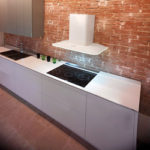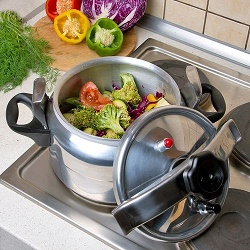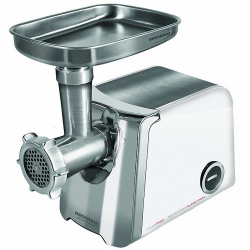Chimney (dome) hood for the kitchen
A kitchen hood is a device that cleans the air from unpleasant odors, burning and smoke. It is hard to imagine how housewives did without it before. Now this unit has become almost an integral part of any kitchen. At the moment there are many types and models of hoods, and each species has its own peculiarities. Therefore it is important choose the right devicebased on a number of characteristics inherent in a particular model.
Hoods come in several types: suspended, recessed and fireplace. Consider the latter type in more detail.
Types and features
Chimney hood with its design is similar to the fireplace exhaust system, it is also called dome because of the appropriate shape. Air is supplied to the casing, which is made in the form of a dome, and then it is discharged to the ventilation through the air duct.The hood is usually picked up under the kitchen interior, it becomes an integral part of it, and looks quite aesthetic.
Fireplace hoods can be:
- Wall mounted.
- Island.
- Corner.
Last view is quite expensive due to non-standard design solutions, their price can vary between 40-45 thousand, which is far from everyone can afford. This type of hood is used if the stove is in the corner of the kitchen.
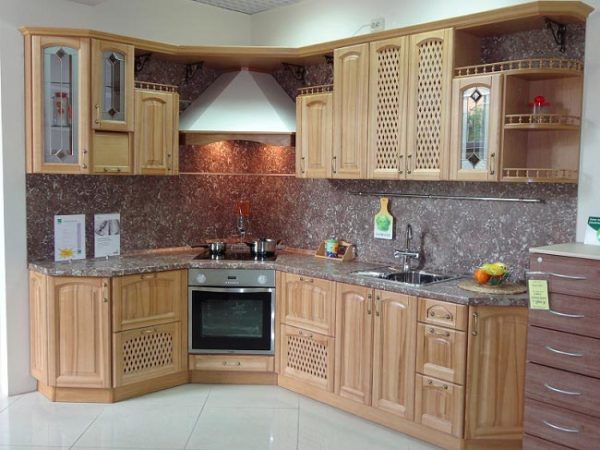
Island models attached directly to the ceiling. This is ideal when the stove is not located along the wall, but is located, for example, in the center of the kitchen. A feature of island-type models is that the air moves only in one direction - by blowing, that is, air is not recirculated.
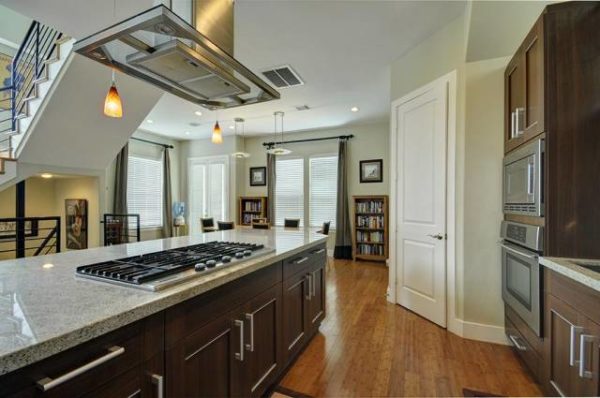
Title wall hoods speaks for itself - devices of this type are mounted to the wall. They look like an umbrella with a pipe attached to it. Suitable for rooms where the hob is attached to the wall.
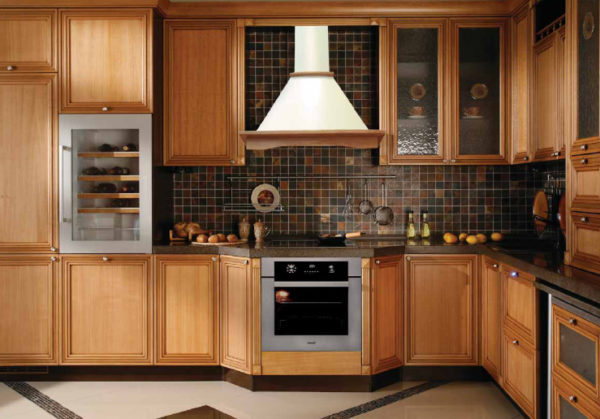
Installation
In order for the hood to work properly, during its installation it is important to observe a number of basic rules, to make the necessary measurements.
- First, the area where the device will be located is determined.In the room where the electric stove is used, the appliance can be placed at a height of 50 cm from the cooking surface, for gas - the distance should be longer (for more details about the standards, see the article on selection distance from the hood to the plate).
- With the level on the wall a horizontal line is marked with a pencil - this will be a guideline for the subsequent installation of the exhaust system.
- Then measurements of the height of the whole structure are carried out, the excess part of the duct is cut off. Be sure to verify the possibility of connecting the pipe to the ventilation channel.
- The dimensions of the back side of the chimney hood are measured, the vertical and lower axes are marked on the wall. This drawing allows you to determine the correct place of fastening of the structure, then holes are drilled through the corners of the axes, into which you need to insert dowels.
- Installation. First fix the upper part of the construction with screws. Then, using a level, make sure that the unit is correctly positioned, and fasten the bottom part.
- Connect with corrugations outlet of the fireplace extract to the ventilation.
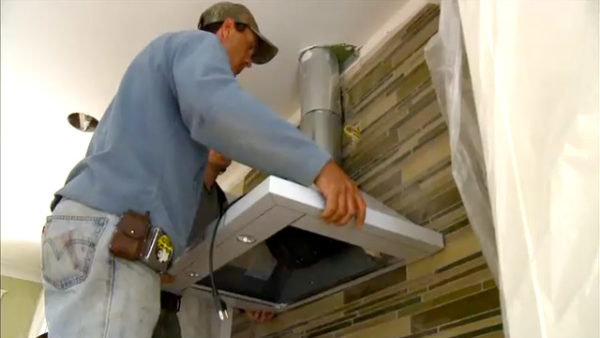
How to care for appliances
Cleaning the hood must be carried out according to certain rules.Proper care requires both the internal and external side of the exhaust device. When cleaning the outside of the casing, do not use a stiff brush, as it may scratch the surface, and this will spoil the appearance of the hood. Use gentle detergents. For internal cleaning, in addition to wiping the casing, filter processing should also be carried out. The grease filter can be rinsed with plain water, after cleaning it from grease. But the built-in carbon filters are only subject to complete replacement.
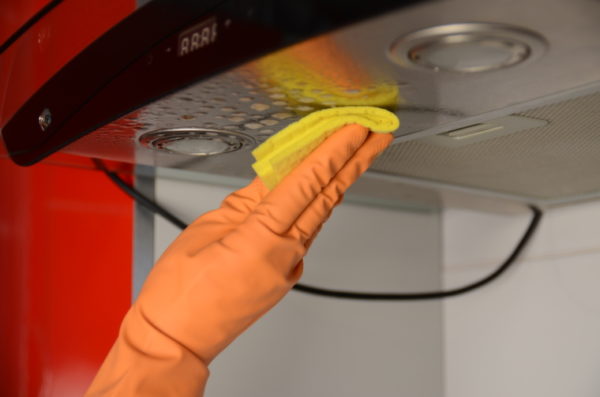
Before you start cleaning the filters, do not forget to disconnect the hood from the mains. The device can be connected only after absolute drying.

/rating_off.png)






